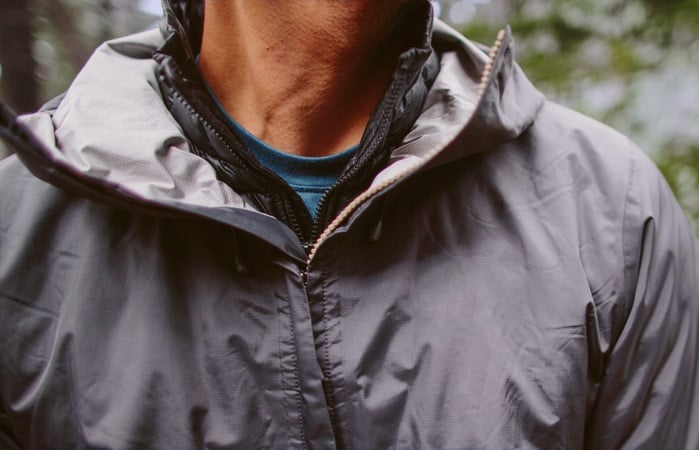
It doesn’t have to be the middle of winter to make cold weather a concern on your hiking trip. Depending on where you live and where you’re hiking, you can encounter cold temperatures any time of year that can make your trip uncomfortable, or worse, cause a serious injury or illness.
To have a more pleasant adventure, first arm yourself with some tips and knowledge for cold-weather hiking, including:
- Proper cold-weather clothing and gear
- Food and hydration
- Cold-related injuries and illnesses
To stay comfortable on a cold-weather hike, it’s critical to wear the right clothing and carry the right gear.
Wear layers: Layering is a three-part system that includes a base layer that wicks perspiration away from your skin, a mid layer that insulates you from the cold and a shell layer that keeps wind and moisture out. The goal with layering is to add and remove layers throughout your hike so you can stay warm and comfortable without overheating and getting sweaty. It can feel like a chore to stop and change clothes, but it’s really important to stay dry. Getting wet on a cold day can possibly lead to hypothermia.
Learn more in our Layering Basics article and Underwear (Base Layer): How to Choose article.
Say no to cotton: When cotton gets wet, it takes a very long time to dry, which can leave you feeling damp, cold and miserable. Synthetic and wool layers dry much faster and will move perspiration away from your skin.
Cover your skin: Any skin that is exposed to freezing temperatures and cold wind is prone to frostbite. Take special care of your nose, cheeks, ears, fingers and toes.
- For your hands, try wearing lightweight or midweight fleece gloves under waterproof shell mittens or shell gloves. It’s also a good idea to bring an extra pair of fleece gloves that you keep stowed in your pack in case the ones you’re wearing get wet.
- For your feet, wear synthetic or wool socks that fit well. Thicker socks provide more insulation, but make sure they don’t cause your boots to fit too tight, which can cut off circulation. It’s also important to keep your feet dry, so carrying an extra pair of socks to change into is a good idea. Wear waterproof boots if you’ll be trekking through snow, and if you’ll be in very cold temperatures you might require boots with built-in insulation.
- For your nose and cheeks, try a neck gaiter for face mask.
- For your ears, a winter hat or headband can do the trick. A neck gaiter or face mask may also provide coverage for your ears.
Avoid tight clothing: Wristwatch bands, cuffs of gloves, gaiters and boots that are too tight can cause poor circulation, which can increase your chance of getting frostbite. Make sure your clothing and gear fit properly.
Add heat: Hand warmer and toe warmer packets are a great way to warm up your digits, especially if you’re prone to cold fingers and toes.
Wear a hat: You can lose heat through the top of your head, so pull a winter hat on if you’re feeling chilly.
Keep snow out with gaiters: If your hike will take you through deep snow, gaiters are a must for keeping snow out of your boots. They also add a bit of warmth. Be sure to use waterproof/breathable gaiters for hiking in snow. Learn more in our Gaiters: How to Choose article.
Bring goggles or sunglasses: Always protect your eyes from the sun and wind. Many goggles and some sunglasses allow you to swap lenses in and out so you can select the right lens tint for the weather. Get some tips on buying goggles and sunglasses.
Pack a headlamp: If you’re hiking in winter, you’ll have less daylight hours, especially if you’re in the northern part of the U.S. You don’t have to end your trip when the sun goes down, but you must be prepared to hike in the dark. Have a sense for how many hours of usable daylight you have and always pack a headlamp with fresh batteries.
Keep batteries warm: Cold weather can kill batteries quickly. Lithium batteries tend to hold up better in cold temperatures than alkaline batteries, but no matter what battery type you use, it’s best if you try to keep them warm. Stowing your headlamp, GPS, cellphone and other electronics in a pocket close to your body can help.
Apply sunscreen: Just because it’s cold out doesn’t mean you stop worrying about sunburn. In fact, if there’s snow on the ground, the sun’s rays can reflect back up at you, so you need to be diligent about applying sunscreen on the underside of your nose and chin and around your neck. Learn more in our article about how to use sunscreen.
Bring the Ten Essentials: The Ten Essentials are a collection of items that help outdoor adventurers be prepared for emergency situations. It’s wise to take these items along whenever you head out for a hike, but perhaps even more so when exploring in cold weather where consequences of a mishap can be more severe. Learn more in our article about the Ten Essentials.
Related articles:

